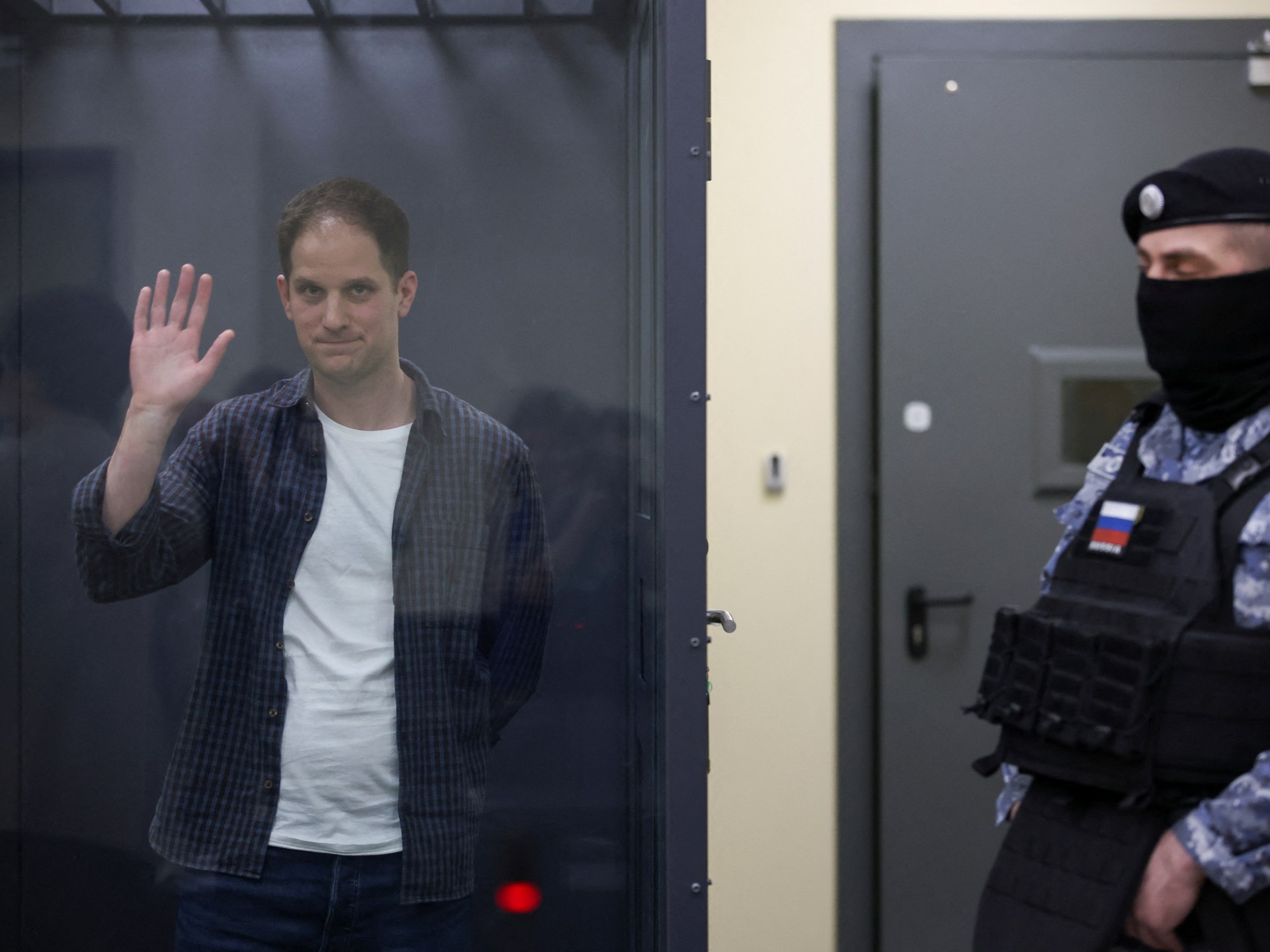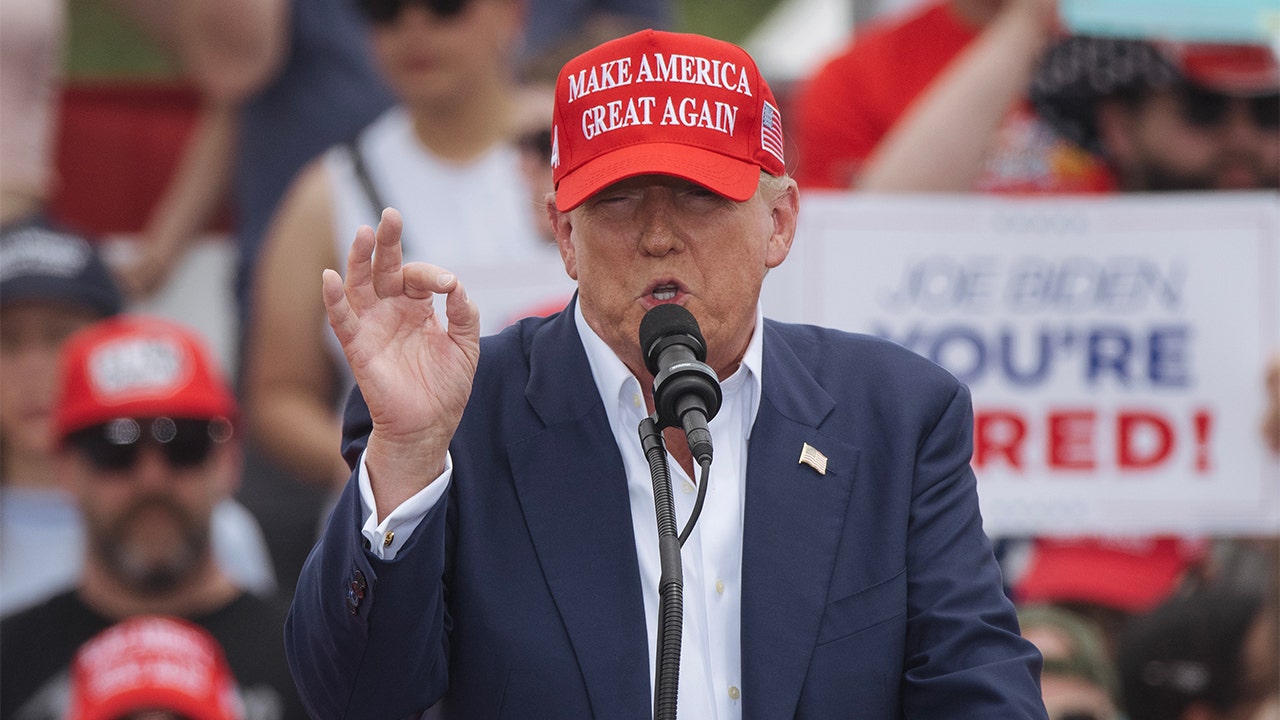When Congress sent tens of billions of dollars to schools — an unprecedented sum — to battle the pandemic, it seemed like reopening campuses was going to be the toughest thing. Or maybe keeping teachers and students covid-free. But it turns out the hardest thing was helping students recover from severe academic losses sustained during the depths of the pandemic.
Washington
Washington’s ferry system steers toward less choppy waters | HeraldNet.com

Leaders of Washington State Ferries know their navigation of the nation’s largest public ferry system is frustrating those most reliant upon it.
Riders want stable service at levels they enjoyed before the pandemic. It’s not been possible with a lack of boats and too few workers continuing to cause delays and canceled sailings.
But in a community meeting Monday afternoon, the agency’s top brass sought to convey hope to 200 participants that the collective ship is moving, slowly, in a better direction.
Hiring of new employees is outpacing those retiring or leaving and a process for building five new hybrid-electric vessels is finally launched.
“A year ago we were in crisis. Now, we’re in recovery,” said Steve Nevey, the new assistant secretary for Washington State Ferries. “None of the challenges we face are easy. It’s going to take time to get the system where it needs to be.”
He and a half-dozen other agency executives spent most of the two-hour public meeting Monday answering questions on topics ranging from the building of those hybrid-electric ferries to drivers cutting boarding lines to efforts to restore service on all routes.
One positive sign is cancellations dropped from 1,128 in the first quarter of 2023 to 493 in the same period this year. Two weeks ago, the system went a full week without a canceled sailing due to a lack of crew, which had not happened in months, ferries officials said.
“I know it doesn’t feel like it but help is on the way,” said John Vezina, director of planning, customer and government relations.
The ferry system has 21 car-carrying vessels in its fleet, of which 15 are presently in service on a reduced schedule. Five aging boats are undergoing maintenance and one is in drydock for conversion to hybrid-electric propulsion.
Those five new hybrid-electric boats are critical. Last month, the agency began a search for potential builders as Washington will accept bids from shipyards nationwide for the first time in more than half a century.
As envisioned, bids are due in January with one or more contracts getting awarded in February 2025. To get boats delivered faster, the state is prepared to split the contract between two low bidders so that two shipyards could go to work simultaneously.
This could get two vessels delivered as soon as 2028 – still a full decade since the state last added new ferries to its fleet. Those first two ferries will serve the Clinton/Mukilteo and Seattle/Bremerton routes.
Why those routes? They are shorter and are better set up for charging infrastructure, and to access the requisite utilities, officials said during Monday’s meeting.
As for the cost, Matt von Ruden, who oversees the ferries electrification program, said it is estimated it will take between $230 million and $275 million to build each boat “but the market will determine the cost.” The Legislature has set aside $1.3 billion for the purchase.
With a competitive bidding process anticipated, he said he is confident the final price offer “will be the best cost.”
Some participating in the virtual meeting asked if it would be quicker to build diesel-powered ferries like ones on the water now. The simple answer is “no,” said Nevey.
“We don’t have a design right now. We’d have to start a design from the start,” he said. Lawmakers would need to change the law – the state ferry system is operating under a directive to electrify its fleet – and provide funding, he said.
“It is not faster. Hybrid-electrics is the quickest path to getting new ferries,” he said.
One of the first subjects broached was what more can be done to curb the criminal act of ferry line-cutting by drivers. It is a traffic infraction and can result in a $139 ticket.
But that’s only if a law enforcement officer sees it happen. Ferry employees are not empowered to issue tickets, Vezina said.
“We all know because we’ve all seen it. We are constrained by state law of what we can do,” Vezina said. Hopefully, those who follow the rules can take a deep breath when it happens and “accept there are people who are going to do this.”
Washington State Standard is part of States Newsroom, a nonprofit news network supported by grants and a coalition of donors as a 501c(3) public charity. Washington State Standard maintains editorial independence. Contact Editor Bill Lucia for questions: info@washingtonstatestandard.com. Follow Washington State Standard on Facebook and X.

Washington
Differences shouldn’t be feared – Washington Daily News

Differences shouldn’t be feared
Published 2:29 pm Wednesday, June 26, 2024
Including touch-ups and additions, I’ve sat in a tattoo artist’s chair over 20 times. I rarely wear long-sleeved shirts, so you can see some of my collection if we ever meet. I use that word intentionally: collection. As a lover of tattoos, I’m also a lover of art. I thus collect art from artists all over the world. The difference between me and a collector of oil paintings is that I always have my art collection with me and never run out of things to look at.
Not everybody appreciates tattoos, nor does everybody understand why people get them. It’s easy when you see somebody like me, covered in tattoos, to make assumptions about the content of their character. There’s still a bit of a stigma out there that suggests, to some, that only lower-class or rough people get tattoos.
My father used to be one of those people. That’s why I waited to get my first tattoo on the day of my 18th birthday when my parents were in Scotland. There wasn’t much he could do on the other side of the globe! He wasn’t pleased initially, but he eventually came around and has now gone to the shop with me several times. He hasn’t yet got his own tattoo, but I’m working on him.
Over time, that stigma has lessened. 40 years ago, somebody who looked like me would never have been called to be the pastor of St. Peter’s. Actually, no church would have hired me. But here we are, in 2024, and a metalhead, tattooed comic book nerd has been welcomed by a church that is always looking for new ways to welcome everybody into our fold. And we mean that: everybody. This is a place where everybody can have a seat at the table, where all can meet God in an oasis of love.
Difference isn’t something we fear at St. Peter’s. I’m as different as they come, but I have never once felt like folks have used my tattoos as a reason to dislike me. Difference shows up in lots of ways. Skin color. Language. Sexual and gender identity.
At St. Peter’s, we are working to ensure that difference isn’t just welcomed but celebrated. I was astounded when the Episcopal Church Women, a fellowship group at our church, asked me to speak about my tattoos. They listened to the stories of where, when, and why I got each piece. They asked rich questions and made me feel so warmly embraced. My difference wasn’t a barrier to connection but was the very thing that enabled connection. It was beautiful, and I can’t thank them enough.
That’s the kind of church we aspire to be and the kind of world we want to build. As a church, we follow Jesus of Nazareth, who welcomed the outcast and the saint and called them equal. As a church, we strive for a more just world where all feel tolerated, welcomed, and valued. If the world has beaten you up, or you feel overwhelmed by the waves and storms in your life, St. Peter’s can be a haven for you. If you’ve found yourself on the margins of church or life in general, come here and be welcomed into our midst. No tattoos are required!
Chris Adams is the Rector at St. Peter’s Episcopal Church in Washington.
Washington
Washington to Approve Deployment of US Military Contractors to Ukraine

CNN reported on Tuesday, June 25 that White House officials are thrashing out the details of a plan to allow military contractors to deploy to Ukraine to help Kyiv’s military to maintain US-provided weapons systems.
While stressing that the proposal had not yet been submitted to or agreed by President Joe Biden, reported that the change would present yet another major change in the US stance towards its support for Ukraine.
JOIN US ON TELEGRAM
Follow our coverage of the war on the @Kyivpost_official.
An official from within the administration told CNN that: “We have not made any decisions and any discussion of this is premature.” The executive also said that the president remained firmly against any suggestion of sending US troops to Ukraine.
The US withdrew all its military personnel that were involved in training or other support to Ukraine’s forces before Russia’s full-scale February 2022 invasion of Ukraine. Since then, Washington has taken great pains to make it clear that the US military and other official representatives have no direct involvement in combat operations.
The State Department has explicitly warned US citizens against traveling to Ukraine since the war began.
The result of US reticence is that if any of the military equipment that it provided sustains damage, it must be transported to Poland, Romania, or another NATO country for repair.
While US troops can help with routine maintenance procedures online that also comes with inherent limitations. The process in both circumstances takes time and resources and keeps vital weapons systems out of service for longer periods than if the work could be done by US experts onsite in Ukraine.
Other Topics of Interest
Trump to Putin: What Key Challenges Face Rutte at NATO?
With the war in Ukraine raging through a third year, leading power the United States set for a crunch election, and China rising, NATO is grappling with major challenges.
US officials said that positioning US-funded contractors in Ukraine would mean maintenance and repair for high-value equipment would be carried out much faster. The F-16 fighter aircraft, which Ukraine is about to receive will require almost continuous routine work to keep in the air.
According to the CNN report, the catalyst for a change of heart over the last few months has been Russian gains on the battlefield that were partly facilitated by the seven-month block on funding caused by Congress.
The possibility of deploying contracted companies to Ukraine comes after Washington took more recent proactive decisions to support Ukraine. This included Biden’s agreement to allow Kyiv to strike targets inside Russia, close to the border city of Kharkiv – a request the US had turned down in the past. Last week the US seemed to relax the limitations on the use of its weapons further when National Security Adviser Jake Sullivan said that US weapons could be used to hit Moscow’s forces anywhere along the Ukraine-Russia border.
Officials cited by CNN made it clear that the deployment of US contractors would be limited to essential tasks and only when adequate threat mitigation plans were developed. Ukraine would not see the mass contractor presence that occurred in Iraq or Afghanistan.
“This would be a much more focused and thoughtful effort to support Ukraine in country,” according to Alex Vindman, who was the director for European Affairs on President Donald Trump’s National Security Council.
CNN said Vindman had been pushing the Biden administration to allow contractor deployment for nearly two years and said the White House had been working on the plan since earlier this year.
“Ukraine is an ally,” Vindman told CNN. “The US has keen, critical national security interests in supporting Ukraine, and there are plenty of risk mitigation measures.”
Washington
Burst in covid spending helped students recover, researchers find

Schools reopened. Students and teachers were, for the most part, kept safe from covid. But what about academic recovery? Did the money help kids get back on track?
Two new reports offer the same answer: Yes.
“There were many reasons to think the money wouldn’t have a very big effect on kids learning because it wasn’t targeted and there were lots of other needs,” said Sean Reardon, an education researcher at Stanford University and co-author of the first paper. “But in fact it did have a significant effect on learning.”
Yet it didn’t finish the job. Between 2019 and 2022, the average U.S. student lost about a half grade level in math and a third of a grade level in reading, according to test data from 30 states analyzed by researchers at Harvard and Stanford universities in the Education Recovery Scorecard project. Students made up about 30 percent of the loss in math and 20 percent of the loss in reading between spring 2022 and spring 2023. Some — though not all — of that can be traced to the federal funding, the researchers conclude. (Results of spring 2024 testing are not yet available.)
“Despite what is an unprecedented amount of money, kids are still far behind,” said Dan Goldhaber, an education researcher at the American Institutes for Research and the University of Washington, who co-authored the second research paper.
Why wasn’t $190 billion — the largest one-time education investment in U.S. history — enough? Among the reasons: Some of the money was spent on covid mitigation and testing, the main focus of the legislation, not academics. Not all of the money for academics was invested in the most effective strategies, because they had other priorities or perhaps were unaware of the research. Not every district got robust funding. And the losses were deep.
Fully catching kids up would require additional spending, the researchers find. The opposite is actually unfolding, with districts running out of the money already allocated. Schools are required to spend the last of the covid relief funding in the coming months, and across the country, districts are cutting staff and programs that were aimed at accelerating academic recovery.
“If the goal is having all students made whole from the pandemic, I do think that states will need to step up,” said Tom Kane, a professor of education and economics at Harvard University and co-author of the first paper, which was produced by a team of researchers from Harvard, Stanford and Dartmouth universities.
Still, the gains already recorded were big enough to pay for themselves, based on how increases in academic achievement translate into higher wages in adulthood, Kane said.
Both papers take advantage of a quirk in how the nearly $190 billion in federal covid relief funds, which came over three allotments in 2020 and 2021, were allocated to K-12 school districts. The government relied on a formula that gave more money to districts with higher portions of students living in poverty. Due to oddities in that formula, districts with similar poverty levels got different amounts. Among the districts where at least 90 percent of students are from families poor enough to qualify for free or subsidized school lunches, federal allocations ranged from less than $4,000 to more than $13,000 per student — in some cases, much more.
The differences among district allocations allowed researchers to estimate the relationship between more funding and test scores. One study examined funding from only the third allocation, by far the largest, approved in 2021; the other looked at the second and third tranches. Both studies examined the impact of the money on all districts, rich and poor.
The two teams came to the same conclusion: An additional $1,000 per student in federal funding translated into a gain of about 3 percent of a grade level of learning in math. For reading, the gains were similar in one study and a bit smaller in the other. These results are in line with what pre-pandemic studies found of earlier, more modest increases in education spending.
This implies that giving a school district an extra $8,000 per student would have been enough to make up nearly half of the average math losses. That compares to average per-pupil spending of $13,187 in 2019, before the pandemic and the surge of federal dollars.
Looking at it another way, the Harvard-Stanford team compared achievement levels between high-poverty districts with similar levels of past achievement that received larger grants and smaller grants. Students in the high-grant districts gained about a fifth of a year more in math than the low-grant districts did and almost as much in reading.
The money appears to have made a difference in the School District of Philadelphia, which received more than $1.6 billion in federal funding — more than $14,000 per student. Between spring 2022 and spring 2023, students made up on average a half grade in math — more than 80 percent of the average losses sustained in Philadelphia between 2019 and 2022.
A large share of money in Philadelphia was spent on extra learning time for students — before and after school and over the summer, and to add social services and counselors. The district also spent $325 million on facilities improvements, something meant to make old buildings safer but that did not directly impact student learning.
Superintendent Tony B. Watlington, Sr., in a statement, credited the federal funding with playing a key role in Philadelphia becoming “the fastest improving large, urban district” in the country.
Now the district is hoping that a statewide lawsuit challenging Pennsylvania’s school funding formula will result in more funding for Philadelphia to replace the lost federal dollars. For now, the schools are using reserve funds to maintain the supports put in place, said Christina Clark, a spokeswoman for the district.
“We’re working on preserving those because we’ve seen the impact it’s had on students,” she said.
The Cleveland Metropolitan School District also saw significant federal spending — nearly $427 million in the second and third allotments, or about $12,000 per student. As in Philadelphia, students also gained about a half year of learning in math between spring 2022 and spring 2023, but the losses in Cleveland were deeper, so this erased only about half of the slide since 2019. Early data from spring 2024 testing shows progress continued, though details were not available, officials said.
One of Cleveland’s key investments was a robust summer learning program, which combined engaging and fun activities with academic review. The district also upped funding to each school, and some used the extra for tutoring or other academic supports.
“We would not have been able to do some of this work at scale if we did not have this funding,” said Selena Florence, the district’s chief academic officer.
With the federal money running out, Cleveland this year cut back its summer program, which had served more than 5,000 students in the last few years, by about half. The district cut back other programs too, and eliminated the extra school-based funding.
But Florence said she is optimistic that Cleveland can continue making progress. “Having additional money is always going to help us doing the work we have to do,” she said. “The work can certainly be done without it.”
Researchers did not credit all the academic gains recorded to more federal spending. Many districts that received no money, or very little, saw large gains. These were typically wealthy districts that consistently have other advantages.
And low-income districts saw improvements beyond what the federal funding alone would have predicted, the Harvard-Stanford group found. Among districts with at least 70 percent of low-income students, between one-third and one-half of the improvement in test scores could be attributed to the federal funding. It was not clear what accounted for the rest; possibilities include deeper parental involvement, extra efforts by teachers or extra local funding.
Kane bemoaned that there is scant data to explain how districts spent their money, seeing a missed opportunity to assess which interventions were most effective. Past research has found certain initiatives — such as intense tutoring or small class sizes in the early years — produce greater academic gains than others. The federal rules required that districts spend at least 20 percent of their money addressing learning losses, but there was little guidance beyond that.
“In the absence of being able to say which interventions work, we can ask the next best thing,” he said. “Did the districts that got and received more money go faster in catching up?” The answer, they found, is yes.
-

 World1 week ago
World1 week agoProtesters in Brussels march against right-wing ideology
-

 Movie Reviews1 week ago
Movie Reviews1 week agoShort Film Review: Willow and Wu (2024) by Kathy Meng
-

 News1 week ago
News1 week agoA fast-moving wildfire spreads north of Los Angeles, forcing evacuations
-

 World1 week ago
World1 week agoAl-Qaeda affiliate claims responsibility for June attack in Burkina Faso
-

 News1 week ago
News1 week agoMass shooting at Rochester Hills splash pad: Everything we know
-

 Movie Reviews1 week ago
Movie Reviews1 week agoFancy Dance (2024) – Movie Review
-

 Politics1 week ago
Politics1 week agoTrump resurrects Biden's 'devastating' 1994 crime bill as he courts Black Detroit voters: ‘Super predators'
-

 World1 week ago
World1 week agoRussia sets date for closed-door trial of US journalist















